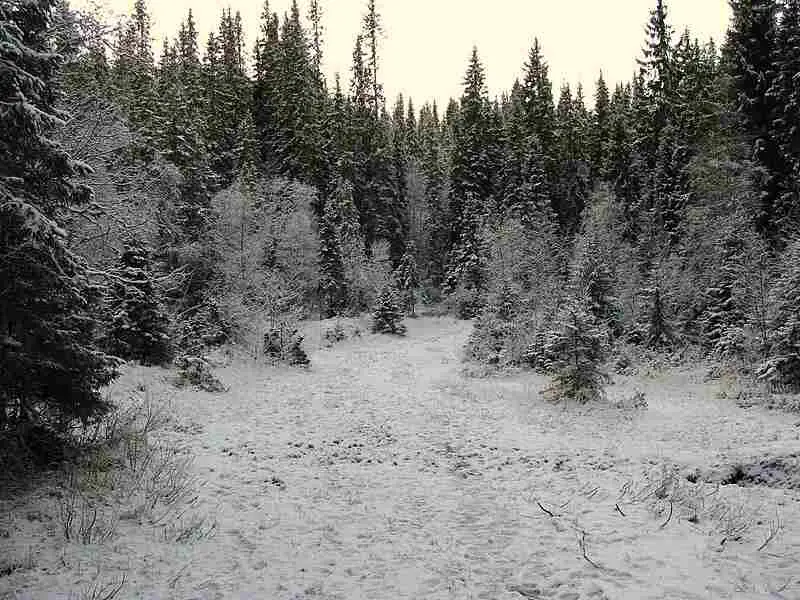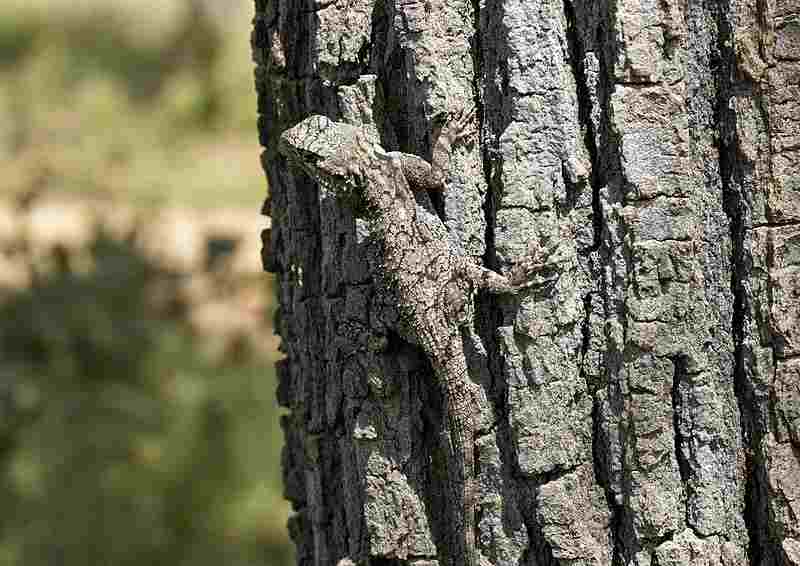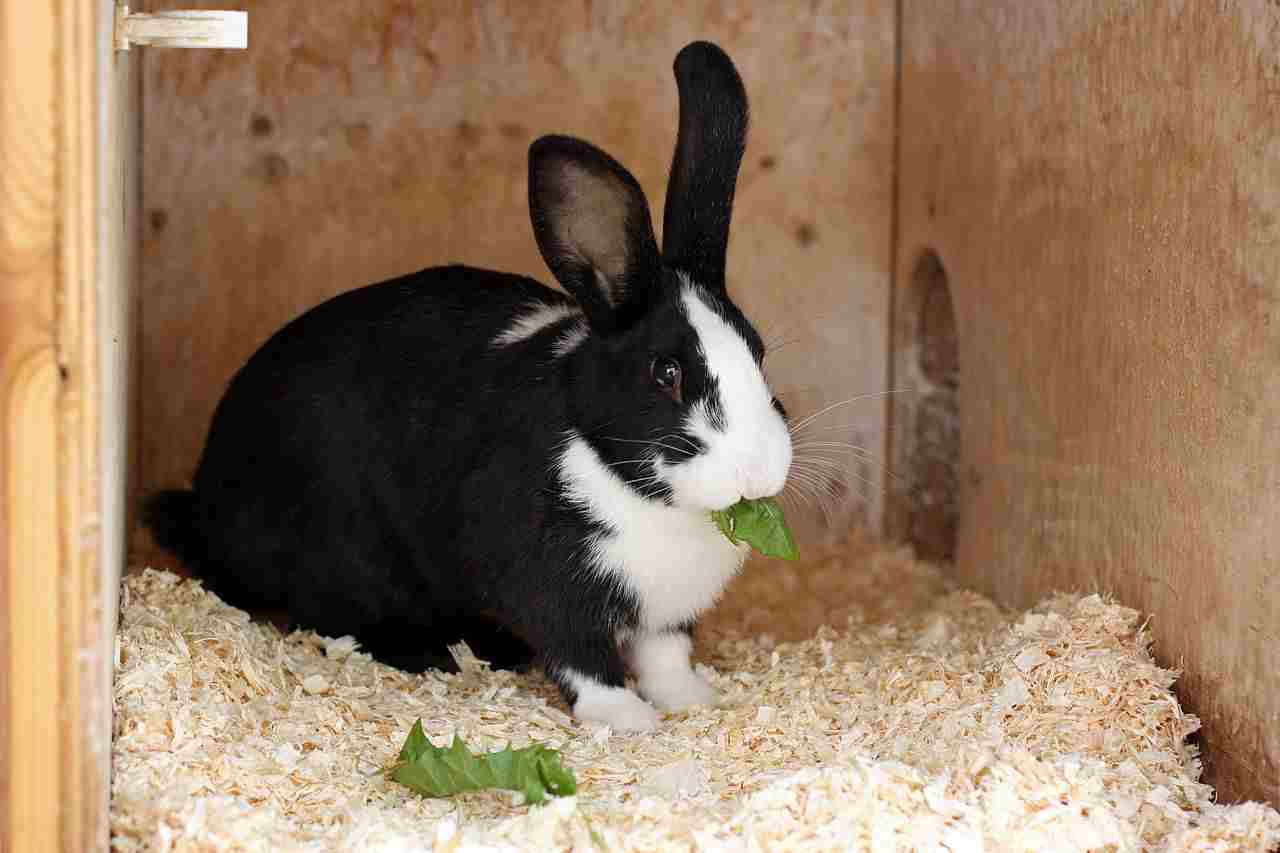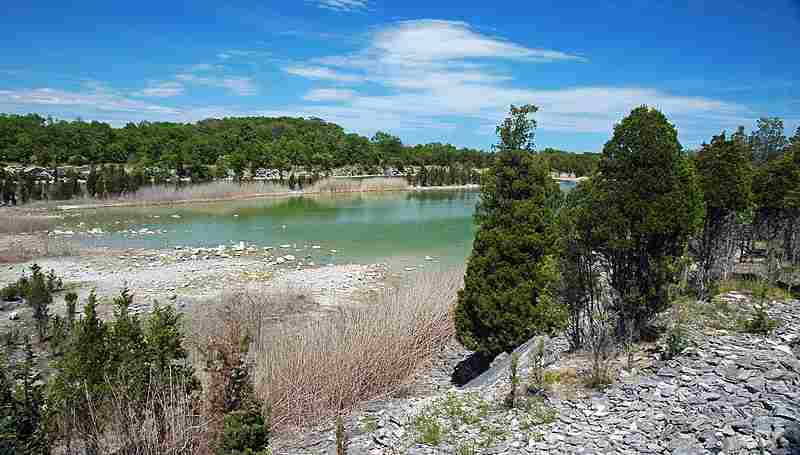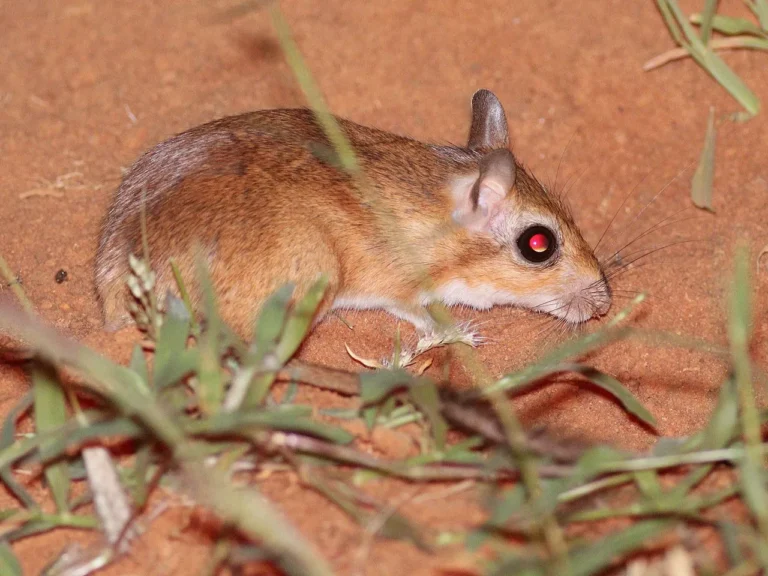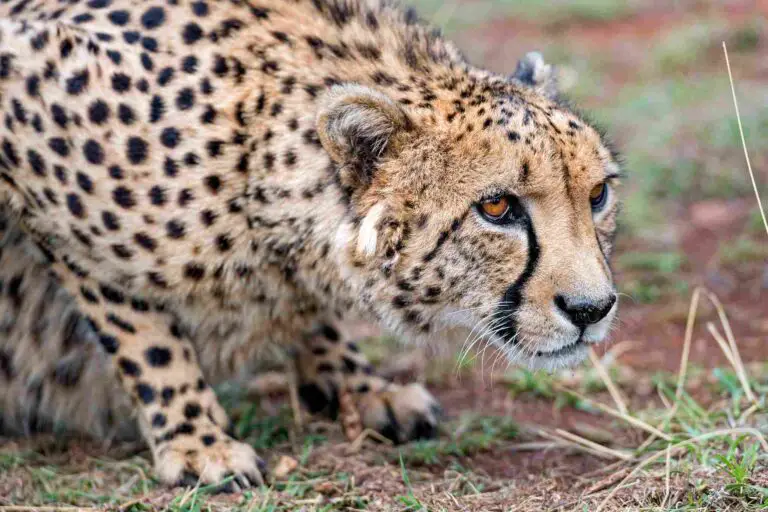Boreal Forest Seasons, Temperature and Precipitation Discussed
Boreal forest seasons are; summer and winter; where the former is relatively humid, warm and short-lived, and the latter is dry, cold and prolonged.
This article discusses the boreal forest seasons, using different factors and criteria, as outlined below;
-Boreal Forest Summer
Summer is one of the two main boreal forest season, alongside winter. It is typically short in duration, characterized by relatively warm temperature, and can be defined or described based on soil, atmospheric conditions, changes in water availability, as well as changes in plant and animal dynamics. These descriptive criteria are individually discussed as follows;
1). Soil Conditions in Boreal Forest Summer Season
During the summer in boreal forests, several notable changes in soil conditions occur, including soil temperature increase, thawing of permafrost, increased moisture levels, nutrient cycling, plant productivity, soil acidification, root development, and increased soil biodiversity.
As the temperature rises during the summer months, the soil in boreal forests also warms up. Warmer soil temperatures promote microbial activity, which accelerates biodegradation and the process of nutrient recycling.
In some boreal regions, permafrost may thaw partially during the summer. This thawing can lead to the formation of small waterlogged/temporary wetland areas and can impact plant root systems.
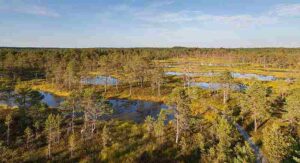
The warmer temperatures of summer lead to increased evaporation from the soil and transpiration from plants. This can result in slightly drier surface soils. However, moisture levels remain relatively high due to the cool and wet boreal climate.
The combination of higher temperatures and increased moisture availability during the summer enhances nutrient cycling in the soil. Decomposition of organic matter accelerates, releasing nutrients that become more readily available to plants.
Boreal forests experience a burst of plant growth during the short growing season of summer. The increased plant productivity leads to the accumulation of organic matter, such as fallen leaves and plant litter, on the forest floor.
The decomposition of organic matter and the release of plant compounds can lead to mild soil acidification, affecting the pH of the soil.
As the ground thaws, boreal forest plant roots, including those of trees and shrubs, extend and grow more vigorously. This allows plants to access nutrients and water from a larger soil volume.
The summer season brings about a higher diversity of soil organisms, such as earthworms, insects, and soil fungi, as well as increased microbial activity.
These changes in soil conditions during the summer are effective in their role in facilitating the ecological dynamics of boreal forests, influencing plant growth, nutrient cycling, and the overall productivity of the ecosystem.
2). Atmospheric Conditions in Boreal Forest Summer Season
During the summer in boreal forests, various changes in atmospheric conditions occur as a result of the seasonal transition. Some of the key changes include warmer temperatures, extended daylight duration, higher humidity, increased precipitation, less snow (and ice cover), and increased insect activity. Others which are also briefly discussed here are; accelerated plant growth, bird migration, bird migration, and increased forest fire hazards.
One of the most noticeable changes that occur during the summer in boreal forests is the increase in temperature. Summer months are considerably warmer (due to higher intensity of solar radiation) than the cold winters, leading to a thawing of the landscape.
Boreal forests experience the phenomenon of the "midnight sun" during the summer, with daylight lasting for an extended period. This increased daylight promotes plant growth and photosynthesis.
Warmer temperatures can lead to increased humidity in the air, creating a more favorable environment for plant growth and facilitating the transpiration of moisture from trees.
Many boreal regions experience more rainfall during the summer, which contributes to higher soil moisture levels. This extra precipitation supports plant growth and provides water for the diverse aquatic ecosystems that often occur within boreal forests.
During the summer, the snow and ice that typically blanket boreal forests in winter have melted, revealing the ground and allowing access to soil and vegetation.
The warmer temperatures of summer lead to increased activity of insects, including mosquitoes and other biting insects. This can affect the behavior and well-being of wildlife within the forest.
The summer season is when boreal forests come to life, with many plant species in full bloom. The landscape becomes vegetated and green, as plants take advantage of the available sunlight and warmth.
Many bird species migrate to boreal forests during the summer to take advantage of the supply of food and favorable nesting conditions. The forests during this period, come alive with the sounds of such migrant birds.
The warmer temperatures and increased food availability lead to heightened wildlife activity. Species like bears, moose, and various rodents are more active during the summer months.
In some cases, the increased temperatures and dry conditions during the summer can elevate the risk of forest fires, which can have both natural and human-induced causes.
Such changes as the above discussed, in atmospheric conditions during the summer, are significant for the boreal forest ecosystem, influencing the life cycles of its flora and fauna and contributing to the overall vitality of this unique biome.
3). Water Availability in Boreal Forests During Summer
During the summer in boreal forests, several changes in water availability and distribution occur, which have a significant impact on the ecosystem.
Some of these impacts are observed in the form of; thawing of snow and ice, increased precipitation, formation of ponds and wetlands, higher soil moisture, higher flow rates for rivers and streams, availability of surface water for terrestrial animals, potential fire suppression, increased rate of groundwater recharge, as well as generally favorable conditions for both terrestrial and aquatic animals. Below is further elaboration of these points;
Summer marks the thawing of snow and ice that accumulated during the winter months. This leads to the release of stored water, increasing water availability in the form of meltwater.
Many boreal regions experience higher precipitation levels during the summer. Frequent rainfall contributes to water availability in the ecosystem, nourishing plant life and replenishing water sources.
Thawed ice and increased rainfall create temporary ponds and wetlands in boreal forests. These aquatic habitats become important breeding grounds for various species of amphibians, insects, and waterfowl.
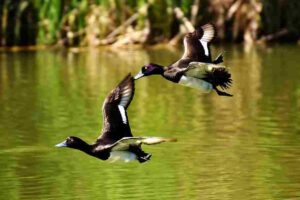
The combination of increased rainfall and melting snow contributes to higher soil moisture levels in the forest. This moisture is essential for plant growth and sustains the diverse plant species in the boreal ecosystem.
With the thawing of snow and ice, rivers and streams experience higher water flows during the summer. This increased flow supports aquatic life and provides freshwater for many forest-dwelling animals.
The availability of surface water sources, such as ponds and streams, implies improved access to drinking water for a wide range of boreal forest animals, including moose, beavers, and various birds.
Increased water availability during the summer can also help prevent or suppress forest fires, as the moisture content in vegetation and soil reduces the risk of wildfires.
Also, the combination of rainfall and snowmelt can recharge groundwater reservoirs, which are essential for maintaining the long-term health of boreal forests.
The temporary wetlands, ponds, and streams created during the summer support diverse aquatic ecosystems, with an abundance of aquatic plants, insects, and amphibians.
The increased water availability during the summer influences wildlife activity. Many animals rely on surface water sources for hydration and foraging, which makes them key locations for observing and studying forest-dwelling species.
Altered conditions of water availability, are vital for the functioning of boreal forests, providing the necessary conditions for plant growth and wildlife habitat optimization, and also fostering ecosystem sustainability during the summer months.
4). Plant and Animal Dynamics in Boreal Forest Summer Season
During the summer in boreal forests, there are significant changes in plant and animal dynamics, as the environment temporarily transforms from the cold and snowy conditions of winter to a brief period of warmth and abundant daylight.
This section highlights some of the key changes in plant and animal dynamics during the boreal forest summer.
Plant dynamics associated with the boreal forest summer include; increased autotrophic activity and growth, blossoming of wildflowers, fruit production, increase in foliage density.
Summer marks the growing season for boreal forests. Warmer temperatures and extended daylight hours promote plant growth, leading to the lush, green appearance of the forest.
Several wildflowers and flowering plants bloom during the summer, adding bursts of color to the forest floor and attracting pollinators such as bees and butterflies.
Various berry-producing plants, like blueberries and lingonberries, bear fruit during the summer, providing a food source for both wildlife and humans.
Deciduous trees, such as aspen and birch, unfurl their leaves, contributing to the canopy's overall density and creating shaded areas for animals and smaller plants.
Animal dynamics associated with the boreal forest summer include; migration, nesting and reproduction, increased insect abundance, increased rates of organic activity and foraging, active predation, fish spawning, notable amphibian activity, and insect parasitism.
Many bird species, such as warblers, flycatchers, and thrushes, migrate to boreal forests during the summer to breed and take advantage of the abundant insect prey.
Numerous migrant birds build nests and raise their young in the boreal forest, during the summer months. This is also the time when mammals like moose and deer give birth to their offspring.
The summer brings a surge in insect populations, which provide a viable food source for birds, bats, and other insectivorous animals.
Larger mammals, such as bears, beavers, and moose, are more active during the summer, as they forage for vegetation, aquatic plants, and berries to fatten up for the coming winter.
With the increase in plant and insect life, predator-prey interactions intensify. Carnivores like foxes, wolves, and lynx may have an easier time finding food during this period.
In boreal forest regions with aquatic ecosystems, fish like salmon and trout return to their spawning grounds in rivers and streams, attracting predators like bears.
Boreal wetlands and ephemeral ponds come to life with the breeding activities of amphibians like frogs and salamanders during the summer.
Lastly, many insects parasitize or prey on other insects during the summer, contributing to complex trophic dynamics within boreal forest food webs.
The changes in plant and animal dynamics during the summer are essential for the boreal forest ecosystem's health and vitality. The brief and intense burst of activity and growth supports the various species that call this biome home.
-Boreal Forest Winter
The boreal forest winter is relatively long, frigid and dry; and it can be described based on changes in soil conditions, atmospheric conditions, water availability, as well as plant and animal dynamics.
1). Changes in Soil Conditions During the Boreal Forest Winter
During the winter in boreal forests, significant changes in soil conditions occur as a result of cold temperatures and snow cover. Here are some key changes in soil conditions during the boreal forest winter;
The most noticeable change in soil conditions is arguably the freezing of the topsoil and subsoil layers. As temperatures drop, the soil gradually freezes, forming what is known as the "frozen ground" or permafrost in some boreal regions.
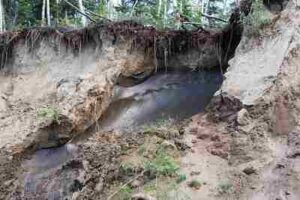
The cold temperatures and frozen soil greatly reduce biological activity in the soil. Microorganisms, such as bacteria and fungi, become less active, leading to a decrease in rates of biodegradation and nutrient cycling.
Some nutrients are temporarily locked in the frozen soil, as they are less accessible to plants and microorganisms during the winter. This can lead to a buildup of nutrients that will become available once the soil thaws in the spring. The same mechanism/condition is responsible for the significant level of carbon sequestration that occurs in such permafrost zones.
Snow accumulates on the forest floor, insulating the soil and preventing moisture loss. Underneath the snowpack, the soil remains relatively moist, which can be important for the survival of certain organisms and plant roots.
Some soil microorganisms have developed adaptive strategies to survive the harsh winter conditions. Some fungi and bacteria are adapted to function at low temperatures, continuing to carry out minimal metabolic processes.
The layer of snow on the ground helps to prevent soil erosion by protecting the soil from erosional agents like wind energy and surface runoff. This function is crucial for maintaining soil structure and preventing the loss of fertile topsoil.
Many boreal plants, including coniferous trees, possess adaptations to tolerate and/or endure the winter. Some trees have shallow root systems that allow them to access the soil's limited nutrients, while others have needles and scales that reduce moisture loss.
The depth to which the soil freezes can vary depending on local conditions, with deeper freezing in colder areas and more shallow freezing in milder regions.
The frozen soil provides a stable mechanical foundation for the forest ecosystem, supporting the trees and vegetation above. This stability is especially important in regions prone to heavy snow loads.
Some boreal wildlife, like voles, mice, and squirrels, burrow under the snow to access the soil below and feed on stored seeds or plant matter. Their activities can have an impact on the soil.
Generally, changes in soil conditions during the boreal forest winter are an important part of the seasonal cycle, with soil and vegetation adaptations allowing the ecosystem to endure the harsh cold and snow until the arrival of spring.
2). Changes in Atmospheric Condition During Boreal Forest Winter
In boreal forests, the arrival of winter brings about significant changes in atmospheric conditions that have a profound impact on the ecosystem. Below is a discussion of the key changes in atmospheric conditions during the boreal forest winter.
Some of these changes which are highlighted are; colder temperatures, shortened daylight duration, decreased solar radiation, snow accumulation, increased albedo effect, icy and snowy precipitation, low humidity, and (minor) changes in atmospheric gas composition. Other issues regarding organic adaptation and water body conditions, are also briefly referred to;
One of the most noticeable changes is the drop in temperatures. Winter in boreal forests can bring extremely cold conditions, with temperatures well below freezing. This cold air mass influences the entire ecosystem.
Boreal forests experience a substantial reduction in daylight hours during the winter. This shift in photoperiod triggers various biological responses, such as hibernation, migration, and changes in metabolic rates for both plants and animals.
With shorter days, there is less sunlight available for photosynthesis. This reduction in solar radiation affects the growth and activity of plants and the availability of energy for the food web.
The boreal winter is characterized by significant snowfall. The accumulation of snow on the forest floor insulates the soil, providing a thermal barrier that protects plants and small mammals from extreme cold.
The snow-covered landscape reflects more sunlight back into the atmosphere, contributing to cooler surface temperatures. This albedo effect plays a role in maintaining the winter's cold conditions.
Boreal forests experience frequent snow and icy precipitation. This winter weather can affect the movement and foraging patterns of wildlife.
The cold air holds less moisture, leading to low relative humidity levels. This can impact the respiratory efficiency of some animals, particularly those with moist surfaces, such as amphibians.
Lakes, rivers, and temporary marshes in boreal forests often freeze over during the winter. This limits access to aquatic habitats for some species and creates a challenging environment for aquatic life.
Winter conditions generally reduce the risk and rate of wildfires in boreal forests due to the snow cover and frozen vegetation. This provides a temporary respite from the fire cycle.
Cold temperatures can affect the exchange of gases between the forest and the atmosphere. Some greenhouse gases, like carbon dioxide and methane, may become less abundant due to their sequestration, and some quantity of the stored gases is often subsequently released from frozen soils when they thaw in spring.
Many bird species migrate to more temperate regions during the harsh winter conditions, as the boreal forest may not provide sufficient food resources during this time.
Some animals have developed specific adaptations to cope with the winter environment, such as growing thicker fur or feathers, or hibernating to conserve energy.
Alterations in atmospheric conditions during the boreal forest winter present challenges and opportunities for the plants and animals that call this biome home. Many species have evolved specialized behaviors and physical adaptations to thrive in these extreme conditions and optimize their use of limited resources available during this season.
3). Changes in Water Availability During the Boreal Forest Winter
Water availability in boreal forests during winter undergoes several important changes due to the unique characteristics of this season.
Some phenomena that can be used to describe these changes are; freezing of water bodies, snow accumulation, limited precipitation, frozen soil water, limited surface runoff, and temporary isolation. Some other important factors like impacts on aquatic animals and subsequent thawing, are also briefly mentioned below;
Many lakes, rivers, and wetlands within boreal forests freeze during the winter months. This ice cover limits access to liquid water for both terrestrial and aquatic organisms, affecting their habitat and behaviors.
While water bodies freeze, the forest floor is covered with a layer of snow. This snowpack serves as a valuable source of moisture for the ecosystem. Underneath the snow, soil moisture is retained, providing an essential water source for plants and small animals.
Precipitation in the form of rain is minimal during the winter in boreal forests, as the dominant form of precipitation is snow. This reduced precipitation can lead to decreased water availability for terrestrial organisms, especially if they cannot access the snowpack.
The soil in boreal forests often freezes during the winter, forming permafrost in some regions. This frozen ground prevents the movement of water through the soil, limiting its availability to plant roots and microorganisms.
With frozen water bodies and snow-covered ground, the capacity for surface runoff is reduced during the winter. This can affect the movement of nutrients and sediments in aquatic ecosystems and the replenishment of groundwater.
Aquatic organisms, such as fish, amphibians, and invertebrates, may hibernate or enter a state of reduced activity during the winter to conserve their energy and survive in cold, ice-covered waters.
Water availability begins to increase as winter transitions to spring. The melting of snowpack and ice contributes to rising water levels in rivers and streams, providing crucial water resources for various organisms and promoting the springtime revival of the ecosystem.
Ice cover on water bodies can isolate aquatic ecosystems, preventing movement between connected water bodies. This can influence the genetics and dynamics of aquatic populations.
Snowpack often serves as an important water source for plants and wildlife. This is because the gradual release of moisture from the snowpack in spring provides a valuable resource for spring growth and breeding activities.
The discussion so far implies that water availability in boreal forests during winter is characterized by the freezing of water bodies and soil, a reliance on snowpack for moisture, and limited surface water movement. These conditions play a crucial role in shaping the ecology of the boreal forest, influencing the strategies and adaptations of its diverse flora and fauna.
4). Changes in Plant and Animal Dynamics During the Boreal Forest Winter
Winter in boreal forests is accompanied by notable changes in plant and animal dynamics as they adapt to the harsh conditions of cold temperatures, limited daylight, and dense snow cover. This section discusses some key changes in both flora and fauna during the boreal forest winter.
Plant dynamics in the boreal forest winter, can be discussed with significant reference to deciduous trees, conifers, limited growth and photosynthesis, and influence of snow cover.
Boreal forests are dominated by evergreen conifers, but there are also deciduous trees like balsam poplar and white birch. Deciduous trees shed their leaves during the fall to conserve energy and water. These plants remain dormant throughout the winter, waiting for the return of warmth and longer daylight to resume growth.
Evergreen conifers, such as spruce and pine, continue photosynthesis during the winter, albeit at a slower rate. Their needle-shaped leaves reduce water loss, which makes them well-suited for the cold and dry conditions.
Most plants in boreal forests experience limited or no growth during the winter due to cold temperatures and reduced sunlight. This dormancy conserves energy and resources for the upcoming growing season.
Lastly, snow accumulation serves as an insulating blanket for plants, protecting them from extreme cold and drying winds. Some plants, like low-growing shrubs, may benefit from this snow cover by accessing moisture trapped beneath the snow.
Animal dynamics linked to winter in the boreal forest, can be discussed in terms of migration, hibernation, nocturnal activity, food scarcity, camouflage, ice access, carnivore strategies, and den utilization, among others.
Many species of birds migrate to more temperate regions to escape the harsh boreal winter. Those that stay adapt by finding alternative food sources, reducing activity, and growing thicker feathers to insulate against the cold.
Some mammals, such as bears, ground squirrels, and chipmunks, are known to hibernate during the winter. They enter a state of reduced metabolic activity to conserve energy until spring arrives.
In the absence of daylight, many animals, including nocturnal species like owls and foxes, and some diurnal species, become more active at night. Nocturnal behavior helps these animals to conserve their energy and avoid daytime predators.
Limited food sources in winter can lead to increased competition among animals for resources. Species like lynx and snowshoe hares are adapted to these conditions, with hares relying on bark and twigs and lynx preying on them.
The white coat of animals like the Arctic hare and ptarmigan provides effective camouflage against the snow, making it easier for them to evade predators.
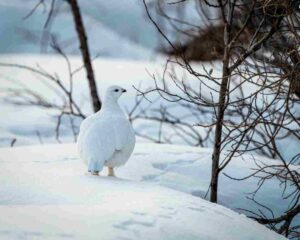
Aquatic animals such as fish and amphibians may adapt to the frozen conditions by seeking refuge beneath the ice in unfrozen pockets of water. Some species can even tolerate subzero temperatures.
Predators like wolves and coyotes may rely on their exceptional tracking abilities to locate prey under the snow. Lynx, with their long legs and large paws, are well-suited to hunting snowshoe hares in deep snow.
Carnivores, such as wolverines and foxes, may utilize dens or burrows to escape the cold and provide shelter during the winter.
Generally, the boreal forest ecosystem undergoes a temporary slowdown during the winter, with many plants and animals adapting to conserve energy and survive the challenging conditions. These seasonal changes are part of the boreal forest's natural cycle and are vital to the resilience and survival of its diverse inhabitants.
-Boreal Forest Temperature
Boreal forest temperature is an important element of the climate that can be discussed based on its instantaneous value, annual average, and seasonal variability.
Boreal forests experience distinct seasonal changes in temperature due to their location in high-latitude regions. Some key characteristics of the average temperature and seasonal changes within boreal forests are
Average Boreal Forest Temperature and Seasonal Changes
Boreal forests are characterized by cold temperatures year-round. The average annual temperature in boreal regions typically ranges from -5°C to 5°C (23°F to 41°F).
Seasonal changes in boreal forest temperature may define distinct temporal conditions like winter, spring, summer and autumn. Among these however, winter and summer are most distinguishable.
Winters in boreal forests are long and severe. Average temperatures during the winter months can range from -30°C to -20°C (-22°F to -4°F), although extreme cold spells can bring even lower temperatures. Snow cover is extensive, providing insulation for the forest floor and a significant drop in temperatures.
As spring approaches, temperatures gradually rise, leading to the thawing of snow and ice. Average spring temperatures can range from -5°C to 5°C (23°F to 41°F). The melting snow contributes to increased moisture availability.
Summers in boreal forests are relatively short but experience a noticeable increase in temperature. Average summer temperatures range from 15°C to 20°C (59°F to 68°F). The increased warmth allows for more active plant growth, with many species flowering and producing seeds during this season.
Autumn is a relatively brief and transitional season in boreal forests. Temperatures begin to drop as the region prepares for winter. Average autumn temperatures range from 5°C to 10°C (41°F to 50°F). Deciduous trees shed their leaves, and evergreen conifers continue photosynthesizing at a reduced rate.
Temperature Variability in the Boreal Forest
Some factors that can be used to discuss the variability of temperature in boreal forests are; occurrence of extreme cold spells, temperature inversion, and formation of microclimates.
Boreal forests can experience occasional extreme cold spells, often referred to as "polar outbreaks." During these events, temperatures can plummet to well below -30°C (-22°F), posing challenges for the flora and fauna.
In some regions, temperature inversions can occur during the winter. This is when a layer of warm air aloft traps cold air near the ground, leading to even colder surface temperatures.
Lastly, boreal forests are characterized by internal microclimates that can influence temperature variations. For example, forested areas may be slightly warmer than open clearings due to the insulating effect of tree canopies.
The seasonal changes in temperature within boreal forests have a generally important role in defining the ecology of the region. Many organisms have evolved to cope with the long, harsh winters as well the relatively short and intense growing season that follows. The cold temperatures also influence soil processes and the availability of water resources, thereby impacting the diversity and spatial distribution of plant and animal species in these northern forests.
-Boreal Forest Precipitation
Boreal forest precipitation is another important element of the climate that can be discussed within different contexts, as shown here.
Precipitation in boreal forests, whose geographic locations are concentrated within high-latitude regions, exhibits distinct seasonal patterns and is very instrumental in defining the ecology of the ecosystem. The subsection below gives an overview of the average value, seasonal changes, and ecological importance of precipitation in boreal forests;
Average Value and Seasonal Changes in Boreal Forest Precipitation
Boreal forests typically receive moderate levels of annual precipitation, which can range from 400 to 1,000 millimeters (16 to 40 inches) per year. This makes them drier than many other forest types, such as temperate deciduous forests, temperate rainforests, or tropical rainforests.
Seasonal changes in boreal forest precipitation may be delineated into spring, summer, autumn, and winter.
Spring in boreal forests often brings an increase in precipitation as temperatures rise, causing snowmelt and the onset of the growing season. This period can be relatively wet, with rain and snowmelt contributing to higher moisture levels in the soil.
The summer months are the warmest in boreal forests, and they generally experience the highest levels of precipitation. This is when most of the annual rainfall occurs. Summer precipitation ranges from 50 to 150 millimeters (2 to 6 inches) per month, supporting the growth and development of plants.
Precipitation begins to decrease in autumn as temperatures drop. The transition to cooler weather and the approach of winter mean less moisture is available. However, some precipitation is still necessary to support the ecosystem and replenish water sources.
Winters in boreal forests are typically dry in terms of precipitation. While there may be occasional snowfall, the overall moisture content is low during the cold months. Snow on the ground can insulate the forest floor, thereby helping to conserve soil moisture.
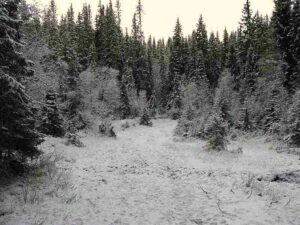
Ecological Importance of Boreal Forest Precipitation
The ecological importance of precipitation in the boreal forest, can be described on the basis of plant growth, wildlife habitat conditions, fire regimes, carbon cycle dynamics, and hydrological processes. These aspects are elaborated further as follows;
Seasonal patterns of precipitation are critical in their role toward shaping the productivity and geo-spatial distribution of microbes and plants in boreal forests. Adequate spring and summer moisture supports the development of trees and understory plants, with summer rains promoting the growth of saprophytes like mushrooms and bacteria.
Precipitation patterns influence the availability of water sources, which are critical for the survival of wildlife in boreal forests. Seasonal changes in precipitation can directly impact the abundance of prey species, thereby affecting predator populations.
Boreal forests are adapted to frequent wildfires, which can be influenced by precipitation patterns. Wetter summers with more rainfall can temporarily reduce the risk of wildfires, while drier conditions can increase the likelihood of fire outbreaks. Some plant species in boreal forests have adapted to benefit from this hazard, through seed release and/or regeneration after wildfire events.
Precipitation affects the trend of nutrient cycling as well as the breakdown of organic matter in boreal forests. Moisture levels in the soil influence microbial activity and the release of greenhouse gases, which are important factors in the boreal forest's role in the global carbon cycle.
Precipitation in boreal forests contributes to the region's hydrological cycle, by impacting the flow of streams, rivers, as well as the overall availability of freshwater resources. This, in turn, has ecological and human implications.
Generally, it can be said that the seasonal changes in precipitation constitute a fundamental driver of ecological processes in boreal forests. They influence plant growth, wildlife habitat, fire dynamics, and the carbon and hydrological cycles within this unique and important ecosystem. Understanding these precipitation patterns is essential for the conservation and management of boreal forests, as they are vulnerable to changes in climate and precipitation regimes.
Conclusion
The two main boreal forests seasons are winter and summer, which are characterized by distinct soil conditions, atmospheric conditions, water availability, as well as plant and animal dynamics.
Other seasons like autumn and spring also occur, but these are less prominent or defined than summer and winter.
Bore forest precipitation and temperature are also important elements of the climate, whose seasonal variability has implications for the boreal environment and its inhabitants.
